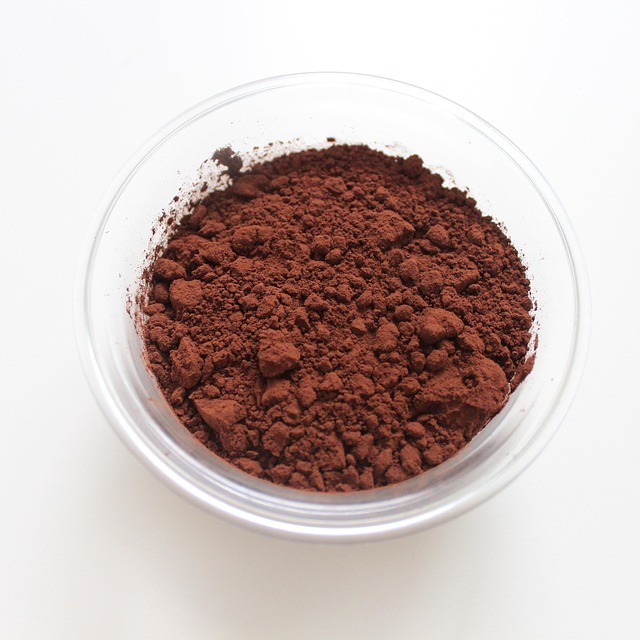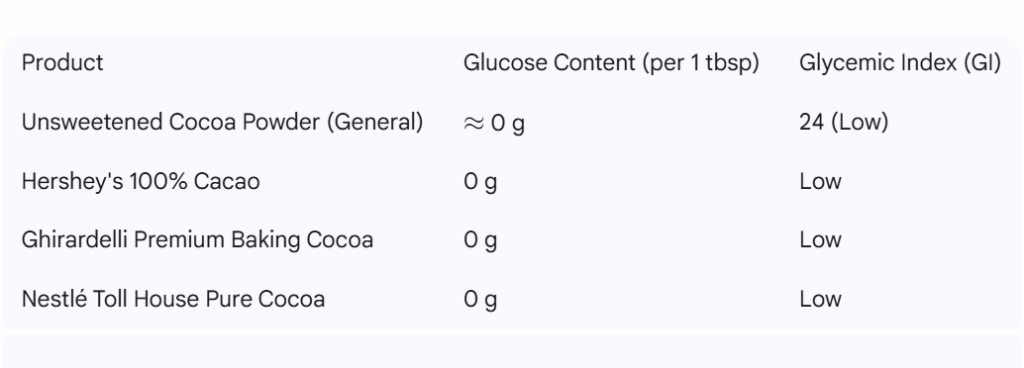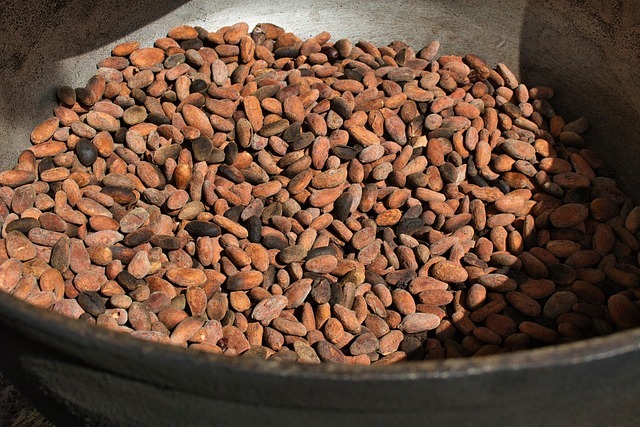Unsweetened Cocoa Powder and Diabetes: Your Sweet Secret Weapon?
Meta Description: Let’s talk about cocoa powder and diabetes. Discover how unsweetened cocoa powder can be a delicious and beneficial addition to your diabetes management plan. Learn about its powerful health benefits, from blood sugar control to heart health, and get practical tips for incorporating it into your diet.
Table of Contents

A Delicious Dilemma: Can You Still Enjoy Chocolate?
As a diabetic, you might ask, “do I have to give up chocolate forever?” The thought of a life without that rich, delicious flavor is enough to make anyone feel disheartened. For those living with diabetes, the concern is real. You’ve been told to watch your sugar, avoid processed sweets, and focus on foods that won’t cause your blood glucose to spike. So, where does that leave a chocolate lover?
The good news is, the answer isn’t a simple “yes” or “no.” It’s about making smart, informed choices. While sugary chocolate bars are indeed off the table, there is a delicious and powerful ingredient that can transform your relationship with chocolate: unsweetened cocoa powder.
This isn’t just a treat; it’s a nutritional powerhouse that can actually support your health goals. Today, we’re going to dive deep into the world of cocoa powder and diabetes, exploring how this simple ingredient can be a sweet secret weapon in your wellness journey.
The Science Behind Cocoa Powder and Diabetes
The beauty of cocoa powder lies not in its flavor, but in its high concentration of beneficial plant compounds called flavanols. These are a type of antioxidant found naturally in cocoa beans. Here’s how these tiny powerhouses work to support your body’s a-game:
Insulin Sensitivity and Blood Sugar Control
One of the biggest pain points for people with diabetes is managing insulin resistance. This means that your body’s cells don’t respond well to insulin, leading to high blood sugar levels. Multiple studies have shown that the flavanols in cocoa powder can help improve insulin sensitivity.
Think of it like this: your insulin is the key, and your cells are the locks. Insulin resistance is like a rusty lock—the key doesn’t turn easily. Cocoa flavanols act like a lubricant, helping that key turn smoothly so glucose can get into your cells where it belongs.
By improving this process, cocoa can help your body use insulin more effectively, potentially leading to better blood sugar control and a more stable energy level throughout the day.

Can cocoa powder help diabetics prevent inflammation and promote heart health?
Chronic inflammation is a silent but serious concern for people with diabetes, as it contributes to a higher risk of heart disease. Flavanols are powerful antioxidants that help fight inflammation. They also help improve blood flow and lower blood pressure, which are both crucial for maintaining a healthy heart.
By regularly including unsweetened cocoa powder in your diet, you’re not only indulging in a delicious flavor but also actively working to protect your cardiovascular system.
Audience-Centric Solutions: Your Concerns About Cocoa Powder And Diabetes Addressed
I know what you’re thinking. You’re worried about hidden sugars, the taste, and whether it’s truly safe.
Concern: “Will cocoa powder spike my blood sugar?”
Answer: Unsweetened cocoa powder has a very low glycemic index and contains minimal carbohydrates, so it won’t cause a significant blood sugar spike on its own. The key is to use it in its pure form and avoid products with added sugars.
Table 1 shows that the glucose content and glycemic index of cocoa is very low. However, processed chocolate may contain sugars in different forms. Therefore, it is preferable to use the powder and read the labels to determine the presence of various sugars.
Table 1: Unsweetened Cocoa Powder Compared To Three Brands

Pain Point: “I’m tired of bland, boring meals.”
Solution: This is where cocoa powder shines! It allows you to reintroduce a rich, satisfying flavor into your diet in a way that is both healthy and exciting. It can be used in smoothies, sprinkled on yogurt, or mixed into unsweetened almond milk to create a rich hot cocoa. The goal is to feel empowered, not deprived.
Aspiration: “I want to enjoy food again without worry.”
Transformation: After learning how to use cocoa powder correctly, your relationship with food can change from one of concern and restriction to one of joy and creativity. You’ll be able to confidently add a delicious twist to your meals, knowing you’re making a choice that tastes great and supports your health. This is the transformation from “I can’t have that” to “I can have this, and it’s even better for me!”

Practical Tips and Actionable Steps Regarding Cocoa Powder And Diabetes
Are you ready to start incorporating cocoa powder into your life? Here are some simple, actionable steps to get you started:
- Read the Label: Always choose 100% pure unsweetened cocoa powder. Check the nutrition facts to ensure there are no added sugars or fillers.
- Start Small: A little goes a long way! Begin by adding just a teaspoon to your morning smoothie or oatmeal.
- Experiment with Recipes:
- “Delicious” Hot Cocoa: Mix 1-2 teaspoons of unsweetened cocoa powder with hot water or unsweetened milk (like almond or coconut milk). Sweeten with a safe, zero-calorie plant based sweetener like stevia or monk fruit.
- Chocolatey Oatmeal: Stir a tablespoon of cocoa powder into your morning oatmeal along with some cinnamon and a few berries for a satisfying breakfast.
- Homemade “Chocolate” Bark: Melt some sugar-free dark chocolate (look for brands sweetened with stevia or erythritol) and mix in nuts, seeds, and a sprinkle of unsweetened cocoa powder before letting it cool.
- Pair with Healthy Fats: Adding a teaspoon of cocoa powder to your avocado smoothie can create a rich, creamy, and satisfying treat while the healthy fats help keep you full.
The Power of the Pod: A Story of Transformation
Consider the story of a man like Michael. He was diagnosed with type 2 diabetes and felt like his favorite foods were being taken away. He missed the richness of chocolate most of all.
One day, a friend introduced him to unsweetened cocoa powder. He was skeptical at first, but decided to try adding it to his yogurt. The flavor was a revelation. It wasn’t the overly sweet candy bar he was used to, but something deeper and more satisfying. He started experimenting, making his own sugar-free chocolate sauces and even “choc-oatmeal.”
This simple addition helped him feel in control and happy with his diet, rather than constantly feeling deprived. It gave him the joy of a treat without the guilt or the blood sugar spike. Michael’s experience is a testament to the power of small, smart choices.
Conclusion and Final Thoughts About Cocoa Powder And Diabetes
The journey with diabetes is about balance and making smart, informed decisions. By understanding the power of pure, unsweetened cocoa powder, you can take a step toward a healthier, more flavorful life. It’s not about giving up what you love, but finding a better, healthier way to love it. Embrace this delicious ingredient, and let it be a tool that helps you achieve your health goals, one spoonful at a time.
Call to Action: What is your favorite way to use cocoa powder? Share your ideas in the comments below and inspire others!
Frequently Asked Questions (FAQ)
Q1: Is Dutch-processed cocoa powder okay for people with diabetes?
A: Yes. Dutch-processed cocoa powder is treated with an alkali to reduce acidity, which makes it less bitter and darker in color. While this process can slightly reduce the flavanol content, it’s still a good choice. The key is to ensure it is unsweetened.
Q2: How is unsweetened cocoa powder different from dark chocolate?
A: Unsweetened cocoa powder is pure cocoa, with no added sugar or fats. Dark chocolate is made from cocoa solids, cocoa butter, and often some sugar. When choosing dark chocolate, look for a high cocoa percentage (70% or higher) and check the label for added sugars.
Q3: Can I use cocoa powder to help me lose weight?
A: While cocoa powder itself isn’t a magic weight-loss solution, its ability to improve insulin sensitivity and make healthy foods more palatable can be part of a successful weight management plan. It helps you feel satisfied and can reduce cravings for sugary, high-calorie treats.
References
Cooper, K. A., et al. (2008). Flavanol-rich cocoa and chocolate ingestion reduces the effect of a high-fat meal on endothelial function. British Journal of Nutrition, 99(5), 1133-1139. https://www.cambridge.org/core/journals/british-journal-of-nutrition/article/flavanolrich-cocoa-and-chocolate-ingestion-reduces-the-effect-of-a-highfat-meal-on-endothelial-function/00E88029577747754366A8B3C9B2E42B
Davison, G. (2012). Flavonoids, diabetes, and inflammation. In Watson, R. R. (Ed.), Flavonoids: Chemistry, biochemistry and applications (pp. 235-256). CRC Press. https://books.google.com/books?hl=en&lr=&id=N6rPqC5T08wC&oi=fnd&pg=PA235&dq=flavonoids+and+diabetes+inflammation&ots=NqE2r-G3bT&sig=w5Q1y0JtS_wB2E_Qk_3V7p0K_0Y
Grassi, D., et al. (2005). Cocoa reduces blood pressure and improves endothelial function and insulin resistance in essential hypertension. Hypertension, 46(2), 398-405. https://www.ahajournals.org/doi/10.1161/01.HYP.0000171242.06497.55
Jalil, A. M., et al. (2013). Effect of cocoa flavanols on glucose and lipid metabolism in patients with type 2 diabetes mellitus: A systematic review and meta-analysis of randomized controlled trials. Diabetes & Metabolism, 39(6), 481-487. https://www.em-consulte.com/en/article/842245/effect-of-cocoa-flavanols-on-glucose-and-lipid-meta
Vincenza, C., et al. (2016). Effects of dark chocolate on fasting blood glucose, C-reactive protein, and plasma lipids in women with type 2 diabetes mellitus. Journal of Agricultural and Food Chemistry, 64(43), 8089-8095. https://pubs.acs.org/doi/abs/10.1021/acs.jafc.6b03362